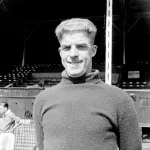 We all know that travel plans can be hampered due to weather conditions, and for drivers, one of the worst weather situations for driving is fog. Of course, weather can affect more than just travel plans. Over the years, we have seen many sporting events called for weather. Everything from snow, to rain, and even fog, although a game called for fog is probably less likely to happen than rain or snow. Still, it isn’t outside the realm of possibilities. It wouldn’t make good sense to try to catch a baseball in the fog. Someone is likely to get hurt. So, games would need to be called for fog, but maybe because a lot of games are played in the afternoon, the fog has had time to burn off.
We all know that travel plans can be hampered due to weather conditions, and for drivers, one of the worst weather situations for driving is fog. Of course, weather can affect more than just travel plans. Over the years, we have seen many sporting events called for weather. Everything from snow, to rain, and even fog, although a game called for fog is probably less likely to happen than rain or snow. Still, it isn’t outside the realm of possibilities. It wouldn’t make good sense to try to catch a baseball in the fog. Someone is likely to get hurt. So, games would need to be called for fog, but maybe because a lot of games are played in the afternoon, the fog has had time to burn off.
In one strange occurrence, during a soccer match between Charlton Athletic and Chelsea in 1937, in the United Kingdom, goalkeeper for the UK’s Charlton Athletic, 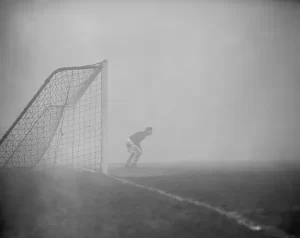 Sam Bartram once stood alone on the field for 15 minutes because he didn’t realize the game had been called off due to heavy fog. Now, if you ask me, that’s ludicrous. Why would he just stand there at the goal for 15 minutes after the game was called!!
Sam Bartram once stood alone on the field for 15 minutes because he didn’t realize the game had been called off due to heavy fog. Now, if you ask me, that’s ludicrous. Why would he just stand there at the goal for 15 minutes after the game was called!!
During the match, a thick fog rolled over the field. It was a very thick fog. The referees decided that this fog was so think that the players were not safe running all over the field, much less dodging a ball too. So, the match was called off, but somehow, Bertram didn’t hear the call, or the whistle or whatever was used to call the game, so he stood there at is post…the goal at the end of the field…alone. Somehow, no one told Bertram that the game had been called, probably because the couldn’t see that he was still out there. So, 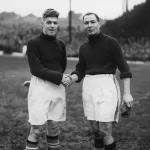 Bertram waited for 15 minutes for the ball to come his way…a full 15 minutes. That’s crazy. How could he have had no idea? Well, somehow Bertram just thought his team was on a “crazy offensive run, pinning down the Chelsea defense, but somehow failing to actually score a goal.” So, there he stood, until finally, a police officer went on the field, and with a look of shock, said something like, “What the heck are you doing? The game’s over, mate.” Well, a rather embarrassed Bartram shuffled off to the locker room, where he was met with unrestrained laughter by his rather rude teammates. They all knew that he was still out there, and no one had made the move to go get him. Well, Bertram got over it, because they were his teammates, and even if it was misguided, it was just a joke after all. I’m sure that after that, he stayed much more alert in the fog that tends to plague the United Kingdom.
Bertram waited for 15 minutes for the ball to come his way…a full 15 minutes. That’s crazy. How could he have had no idea? Well, somehow Bertram just thought his team was on a “crazy offensive run, pinning down the Chelsea defense, but somehow failing to actually score a goal.” So, there he stood, until finally, a police officer went on the field, and with a look of shock, said something like, “What the heck are you doing? The game’s over, mate.” Well, a rather embarrassed Bartram shuffled off to the locker room, where he was met with unrestrained laughter by his rather rude teammates. They all knew that he was still out there, and no one had made the move to go get him. Well, Bertram got over it, because they were his teammates, and even if it was misguided, it was just a joke after all. I’m sure that after that, he stayed much more alert in the fog that tends to plague the United Kingdom.

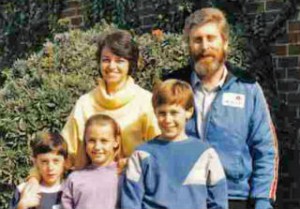 Any illness that takes a life is a tragedy, but sometimes an illness doesn’t take the life, exactly, it just stops everything about that life…in its tracks. In January of 1988 at age 12, Martin Pistorius of South Africa came down with a strange illness. his illness was so unusual, that his doctors weren’t even sure what it was. Nevertheless, they did speculate that it might be Cryptococcal Meningitis. Cryptococcosis is a potentially fatal fungal infection of mainly the lungs, where it presents as a type of pneumonia; and also, the brain, where it appears as a meningitis. The symptoms seem common enough…a cough, difficulty breathing, chest pain, and fever are seen when the lungs are infected. When the brain is infected, symptoms include headache, fever, neck pain, nausea and vomiting, light sensitivity, and confusion or changes in behavior. It can also affect other parts of the body including skin, where it may appear as several fluid-filled nodules with dead tissue.
Any illness that takes a life is a tragedy, but sometimes an illness doesn’t take the life, exactly, it just stops everything about that life…in its tracks. In January of 1988 at age 12, Martin Pistorius of South Africa came down with a strange illness. his illness was so unusual, that his doctors weren’t even sure what it was. Nevertheless, they did speculate that it might be Cryptococcal Meningitis. Cryptococcosis is a potentially fatal fungal infection of mainly the lungs, where it presents as a type of pneumonia; and also, the brain, where it appears as a meningitis. The symptoms seem common enough…a cough, difficulty breathing, chest pain, and fever are seen when the lungs are infected. When the brain is infected, symptoms include headache, fever, neck pain, nausea and vomiting, light sensitivity, and confusion or changes in behavior. It can also affect other parts of the body including skin, where it may appear as several fluid-filled nodules with dead tissue.
As the disease progressed, Pistorius got progressively worse. At first, he lost the ability to move by himself, then his ability to make eye contact, and finally his ability to speak. His parents were told their son was essentially in a vegetative state, basically they were told he was almost brain dead, that he wasn’t “really there” and would die soon. It was the most devastating news a parent could hear, but Pistorius didn’t die. He just stayed in a vegetative state for the next 12 years. His parents couldn’t give up on their son, and so, they took care of him…bathing, dressing, and feeding him. They days turned into years…years of grieving, sadness, weariness, and a sense of having made a mistake, for not “letting him go” sooner. The weariness got so bad that one day, not knowing her son could hear her, Joan Pistorius told him, “I hope you die.” It was a harsh thing to say, but she thought he was brain dead, and she was simply exhausted.
As Joan Pistorius would later find out, to her horror I’m sure, her son heard and understood every word. Somewhere between the ages of 14 and 16, Pistorius had begun to wake up…slowly. At first, it may have been barely noticeable, but at some point, it got to where Pistorius later recalled, “I was aware of everything, just like any normal person.” He could hear, and very much understand and process what he heard, but he couldn’t say or do anything about what he heard or let anyone know that he had heard. The condition Pistorius had, is known as “locked-in syndrome” and can be caused by a stroke, traumatic brain injury, infection, or drug overdose. There is no known cure. I’m sure the situation was even more frustrating for Pistorius, than it was for his mom. Although Pistorius could see, hear, and understand everything, he couldn’t move his body. “Everyone was so used to me not being there that they didn’t notice when I began to be present again,” he later recalled. “The stark reality hit me that I was going to spend the rest of my life like that – totally alone.”
Pistorius made a conscious choice to disengage from his thoughts as his way of coping. Because of his condition, Pistorius spent a lot of time at a care center while his mother worked. He hated the children’s TV show Barney, and that was on constantly there. That show led him to start reengaging with his thoughts in an attempt to take some control of his life. As his thought life improved, so did his body. Then, one glorious day, a relief worker at his daycare center noticed his slight movements and realized Pistorius could communicate. She immediately told his parents, telling them to get another evaluation. Finally, they knew he was conscious. His 
 recovery wasn’t instantaneous, of course, but by age 26, he could use a computer to communicate. Pistorius later enrolled in college, majoring in computer science and started a company online. It was a long road, but he has come full circle, by 2011 when he published his memoir, “Ghost Boy.” Pistorius met his wife Joanna, who is from England in 2008 through his sister Kim, who had moved to there. After meeting Joanna, he moved to England too, and they were married in 2009. By that time, while still using a wheelchair, he was racing in it. Their son, Sebastian Albert Pistorius, was born a few months later.
recovery wasn’t instantaneous, of course, but by age 26, he could use a computer to communicate. Pistorius later enrolled in college, majoring in computer science and started a company online. It was a long road, but he has come full circle, by 2011 when he published his memoir, “Ghost Boy.” Pistorius met his wife Joanna, who is from England in 2008 through his sister Kim, who had moved to there. After meeting Joanna, he moved to England too, and they were married in 2009. By that time, while still using a wheelchair, he was racing in it. Their son, Sebastian Albert Pistorius, was born a few months later.

 Baljenac (also known as Bavljenac)…a tiny island in the Adriatic Sea, just off the coast of Croatia, seems to be showing up all over the internet these days. When you first see it, you will be…rather shocked by its appearance, because well, it really looks like a giant fingerprint. My first thought was, “Is that natural, or man-made?” Well, of course, the structures are man-made, but their original intent was not to create a giant fingerprint. These dry-stone walls that make up the web that covers the island, have been there for centuries, and their purpose is very different than how they make the island look from the air.
Baljenac (also known as Bavljenac)…a tiny island in the Adriatic Sea, just off the coast of Croatia, seems to be showing up all over the internet these days. When you first see it, you will be…rather shocked by its appearance, because well, it really looks like a giant fingerprint. My first thought was, “Is that natural, or man-made?” Well, of course, the structures are man-made, but their original intent was not to create a giant fingerprint. These dry-stone walls that make up the web that covers the island, have been there for centuries, and their purpose is very different than how they make the island look from the air.
The island is located in the Sibenik archipelago on the Dalmatian coast. The island is quite small…just .75 square miles, and it is completely covered by the web of dry-stone walls. The island’s oval shape along with the web of walls makes it look amazingly like a fingerprint. The long lines of low walls, combined with the oval shape bring about the amazing resemblance. Apparently, these dry-stone walls are not that uncommon in west European nations such as Ireland, England and Scotland, much of Croatia’s countryside. The dry-stone walls hug many of these island nations. Originally, they were used for centuries, to mark boundaries between adjacent agricultural lands. That might make sense, but the walls on Fingerprint Island don’t seem to allow for a very big garden, much less be a separation of agricultural lands. Aside from defining agricultural boundaries, the walls also keep out strong winds known as “Bura” that would make cultivation impossible in exposed locations along the coastline. The walls, however strange and however strange they make the landscape look, served a great purpose, especially since they withstood the test of time.
The walls are unusual because they were built without mortar to hold the stones together. Instead, builders carefully select stones and stack them snug together like puzzle pieces. That seems like a recipe for the collapse of the walls, and yet they have stood in place for centuries. They did have large amounts of rock to work with, because much of Croatia’ coastline is characterized by karst topography…meaning it’s rocky. If  you’re going to grow much on rocky terrain, you have to remove the rocks. So, the farmers painstakingly picked rocks out of the soil by hand and then used the same stones to construct walls around geometric plots. The work, planned to create boundaries, created grids in some cases…and the grids stretched for miles. That seems odd in itself, but in the case of Baljenac (Fingerprint Island), an island just .31 miles long, the walls stretch for 14.29 miles. Because of the length of time the grid has been there, the Croatian government has been pushing the UNESCO to include the island and its dry-stone walls in their World Heritage Sites list.
you’re going to grow much on rocky terrain, you have to remove the rocks. So, the farmers painstakingly picked rocks out of the soil by hand and then used the same stones to construct walls around geometric plots. The work, planned to create boundaries, created grids in some cases…and the grids stretched for miles. That seems odd in itself, but in the case of Baljenac (Fingerprint Island), an island just .31 miles long, the walls stretch for 14.29 miles. Because of the length of time the grid has been there, the Croatian government has been pushing the UNESCO to include the island and its dry-stone walls in their World Heritage Sites list.
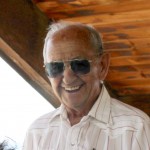
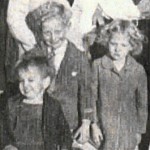 My mom’s brothers, Larry and Wayne Byer were born on either side of her. That made her the middle sister of the family. It also made her part of a threesome. Those three kids were always into so kind of mischief. I can’t say which one of them was the biggest instigator, but if I were to venture a guess, I would say that it would be Uncle Wayne. Even as an adult, Uncle Wayne always had a knack for the “humorous” or mischief as most people call it. As a little boy, that likely got him in trouble with his parents, my Grandma and Grandpa Byer, older siblings, teachers, and other adults. Still, Uncle Wayne’s sense of humor was well known, and much enjoyed by all the kids who knew him then…and those who know him now…as well as, the adults (like me) who used to be one of those kids who loved and enjoyed Uncle Wayne’s sense of humor.
My mom’s brothers, Larry and Wayne Byer were born on either side of her. That made her the middle sister of the family. It also made her part of a threesome. Those three kids were always into so kind of mischief. I can’t say which one of them was the biggest instigator, but if I were to venture a guess, I would say that it would be Uncle Wayne. Even as an adult, Uncle Wayne always had a knack for the “humorous” or mischief as most people call it. As a little boy, that likely got him in trouble with his parents, my Grandma and Grandpa Byer, older siblings, teachers, and other adults. Still, Uncle Wayne’s sense of humor was well known, and much enjoyed by all the kids who knew him then…and those who know him now…as well as, the adults (like me) who used to be one of those kids who loved and enjoyed Uncle Wayne’s sense of humor.
Uncle Wayne has long been a big name in this town…maybe not as one of the wealthiest, or as a top political person, or even as an important schoolteacher, but he was well known and much respected in the school system, nevertheless. The kids all loved him, and so did the teachers, principals, and staff. Uncle Wayne worked hard, and that hard work paid off. People loved him and he loved people. I think his love of people was a big part of his charm. My sisters and I benefitted some because of Uncle Wayne too. Now I don’t mean that we got anything improper, but the staff in the cafeteria always treated us well, as did teachers and office staff. They knew who we were, because we were Uncle Wayne’s nieces.
As boys, Uncle Larry and Uncle Wayne went hunting with their dad to help make ends meet. They grew up in 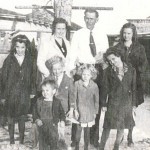
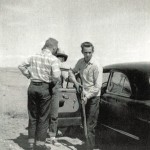 the Great Depression years. Times were tight and everybody needed to help out, and the Byer kids were always willing to help. The kids helped with cooking, cleaning, hunting, fishing, and even financially. The kids didn’t feel cheated either. Their parents were loved and respected, and the kids grew up watching their parents’ giving nature. The older kids helped with the younger kids, and they were just one big happy family, with two parents and nine kids. Their home was filled with love. Today is Uncle Wayne’s 86th birthday. Happy birthday Uncle Wayne!! Have a great day!! We love you!!
the Great Depression years. Times were tight and everybody needed to help out, and the Byer kids were always willing to help. The kids helped with cooking, cleaning, hunting, fishing, and even financially. The kids didn’t feel cheated either. Their parents were loved and respected, and the kids grew up watching their parents’ giving nature. The older kids helped with the younger kids, and they were just one big happy family, with two parents and nine kids. Their home was filled with love. Today is Uncle Wayne’s 86th birthday. Happy birthday Uncle Wayne!! Have a great day!! We love you!!
 Long before James Madison became out fourth President of the United States, he served in a number of other positions. Early on, Madison emerged as an important leader in the House of Representatives and was a close adviser to President George Washington. While many of the early leaders of our nation understood and were prepared to fight for our freedom, they weren’t necessarily eloquent speakers or writers, but then again, many politicians today also have speech writers. I guess each felt the need to work on the important things, and delegate the rest. Since James Madison was well-known as an excellent writer, President Washington asked him to write a letter to Congress for him expressing that he was excited to work with them. Washington wasn’t the greatest wordsmith, and Madison was an excellent writer, so he had Madison do the job.
Long before James Madison became out fourth President of the United States, he served in a number of other positions. Early on, Madison emerged as an important leader in the House of Representatives and was a close adviser to President George Washington. While many of the early leaders of our nation understood and were prepared to fight for our freedom, they weren’t necessarily eloquent speakers or writers, but then again, many politicians today also have speech writers. I guess each felt the need to work on the important things, and delegate the rest. Since James Madison was well-known as an excellent writer, President Washington asked him to write a letter to Congress for him expressing that he was excited to work with them. Washington wasn’t the greatest wordsmith, and Madison was an excellent writer, so he had Madison do the job.
James Madison was excited to be a part of this first administration and wanted to give it his very best effort. So, in one of his first official actions under President George Washington, Madison wrote a beautiful letter to Congress. Congress was very impressed with the “letter from President Washington” and wanted to impress him with a letter of their own. So, naturally, they chose the best qualified person to write a response to President Washington…you guessed it, James Madison. So, Madison wrote a response to the original letter, that he wrote, saying that Congress was also very excited to be working with the president.
Under normal circumstances, you would expect that the two letters would be the end of the matter, and the new administration would proceed to get down to business. You would be wrong. President Washington decided to send a response to the response, and to make matters even more ludicrous, Congress sent a response to  that response as well. As it turns out, and of course, Madison wrote those other letters too. So, all in all, Madison had a whole little conversation with himself by mail in the form of four separate letters. Of course, he still represented the president and congress, but it’s quite likely that no one actually read the letters before they were sent, or at least didn’t really read them carefully…not until the received them anyway. Nevertheless, James Madison wanted to do the very best job he could for both President Washington and for Congress. If he had not don’t an exceptional job, they would not ask for his help again, and his career could have been over. Somehow, I don’t think that was his real motive in writing the excellent letters. I think he wanted to be of good service to the president. Still in the end, Madison’s first official act for President Washington was to write four letters…to himself.
that response as well. As it turns out, and of course, Madison wrote those other letters too. So, all in all, Madison had a whole little conversation with himself by mail in the form of four separate letters. Of course, he still represented the president and congress, but it’s quite likely that no one actually read the letters before they were sent, or at least didn’t really read them carefully…not until the received them anyway. Nevertheless, James Madison wanted to do the very best job he could for both President Washington and for Congress. If he had not don’t an exceptional job, they would not ask for his help again, and his career could have been over. Somehow, I don’t think that was his real motive in writing the excellent letters. I think he wanted to be of good service to the president. Still in the end, Madison’s first official act for President Washington was to write four letters…to himself.
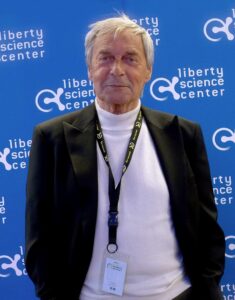 Erno Rubik is a name that is known worldwide…well, maybe not the name Erno, but certainly the name Rubik. Erno Rubik Jr was born on July 13, 1944, in Budapest, Hungary, to Erno Rubik Sr, a flight engineer at the Esztergom aircraft factory, and Magdolna Szántó, a poet. He was born during World War II and has lived all of his life in Hungary. He credits his father as his inspiration for his successes. The younger Rubik became famous for inventing the Rubik’s Cube and other puzzles, but his work isn’t all about puzzles. In fact, much of his recent work involves the promotion of science in education. Rubik is also involved with several organizations such as Beyond Rubik’s Cube, the Rubik Learning Initiative, and the Judit Polgar Foundation. All of these organizations aim to engage students in science, mathematics, and problem solving at a young age.
Erno Rubik is a name that is known worldwide…well, maybe not the name Erno, but certainly the name Rubik. Erno Rubik Jr was born on July 13, 1944, in Budapest, Hungary, to Erno Rubik Sr, a flight engineer at the Esztergom aircraft factory, and Magdolna Szántó, a poet. He was born during World War II and has lived all of his life in Hungary. He credits his father as his inspiration for his successes. The younger Rubik became famous for inventing the Rubik’s Cube and other puzzles, but his work isn’t all about puzzles. In fact, much of his recent work involves the promotion of science in education. Rubik is also involved with several organizations such as Beyond Rubik’s Cube, the Rubik Learning Initiative, and the Judit Polgar Foundation. All of these organizations aim to engage students in science, mathematics, and problem solving at a young age.
All his life, the younger Rubik displayed artistic abilities. He attended the Secondary  School of Fine and Applied Arts, from 1958 to 1962, specializing in sculpture. He attended the Budapest University of Technology from 1962 to 1967, where he also became a member of the Architecture Faculty. He then attended the Hungarian Academy of Applied Arts and was in the Faculty of Interior Architecture and Design from 1967 to 1971. While a professor of design at the academy, Rubik pursued his hobby of building geometric models. One of these became the prototype of his cube. It was made of 27 wooden blocks, with seems common to Rubik’s Cube experts of today, but when it was built, it actually took Rubik a month to solve the problem of the cube!! Go figure!! As of June 2018, the world record for solving the Rubik’s Cube is 4.22 seconds.
School of Fine and Applied Arts, from 1958 to 1962, specializing in sculpture. He attended the Budapest University of Technology from 1962 to 1967, where he also became a member of the Architecture Faculty. He then attended the Hungarian Academy of Applied Arts and was in the Faculty of Interior Architecture and Design from 1967 to 1971. While a professor of design at the academy, Rubik pursued his hobby of building geometric models. One of these became the prototype of his cube. It was made of 27 wooden blocks, with seems common to Rubik’s Cube experts of today, but when it was built, it actually took Rubik a month to solve the problem of the cube!! Go figure!! As of June 2018, the world record for solving the Rubik’s Cube is 4.22 seconds.

The Rubik’s Cube proved to be a useful tool for teaching algebraic group theory, and in late 1977 Konsumex, Hungary’s state trading company, began marketing it. From there, in 1980, the Rubik’s Cube went global. It was marketed throughout the world, and over 100 million authorized units, with an estimated 50 million unauthorized imitations, were sold, mostly during its subsequent three years of popularity. I guess you could say that Erno Rubik had arrived!! Approximately 50 books were published describing how to solve the puzzle of Rubik’s Cube. Following his cube’s popularity, Rubik opened a studio to develop designs in 1984. One of the products that came out of that studio was another popular puzzle toy, Rubik’s Magic.
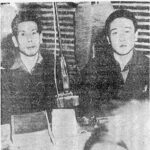
 When a soldier is told to guard an area for his country, he does just that, but on this occasion, this job of “guarding” an area, or an island in this case, was taken to extremes. For a time, the Allies struggled against the Japanese, but by 1945, the tide of World War II had turned decisively against Japan. The Japanese got really nervous as the Americans advanced across the Pacific, drawing ever closer to the Japanese home islands. The American strategists set their sights on Iwo Jima, a small volcanic island about 750 miles south of Tokyo. They saw it as a suitable staging area for an eventual invasion of Japan. Of course, the Japanese were very aware of the threat posed by Iwo Jima landing in American hands. So, they knew they had to garrison the island.
When a soldier is told to guard an area for his country, he does just that, but on this occasion, this job of “guarding” an area, or an island in this case, was taken to extremes. For a time, the Allies struggled against the Japanese, but by 1945, the tide of World War II had turned decisively against Japan. The Japanese got really nervous as the Americans advanced across the Pacific, drawing ever closer to the Japanese home islands. The American strategists set their sights on Iwo Jima, a small volcanic island about 750 miles south of Tokyo. They saw it as a suitable staging area for an eventual invasion of Japan. Of course, the Japanese were very aware of the threat posed by Iwo Jima landing in American hands. So, they knew they had to garrison the island.
Ymakage Kufuku and Matsudo Linsoki were two Japanese machine gunners assigned to the island’s garrison. I can only imagine how they must have felt, knowing that the attack was imminent, and that they could only sit and wait for it. In February of 1945, Iwo Jima was invaded in one of the fiercest and bloodiest battles of the entire Pacific War. The Japanese soldiers fought frantically, almost to the last man. Japanese soldiers were taught that it was more honorable to die that survive, if they lost the war. They were taught that rather than surrender, the honorable thing to do was to commit suicide, so out of a garrison of 21,000 Japanese, nearly 20,000 died before the island was declared secured.
Kufuku and Linsoki were among the few Japanese soldiers who didn’t die in the fighting and didn’t commit suicide. They also believing what their government told them about Americans torturing and killing prisoners, so they were too afraid to surrender. The two men felt like they had no choice but to go underground. They also expected that soon the Japanese would be able to take the island back, so they hid during the day in the multitude of tunnels that were all over the island. They came out at night pilfer food and other necessaries from the American garrison’s supply and trash dumps. It was a tough kind of life, but by doing this, Kufuku and Linsoki managed to survive for a long time in a barren and inhospitable island that was mighty short on both vegetation and game. The Americans weren’t interested in exploring Iwo Jima’s hard landscape, a fact that allowed the two Japanese soldiers to go unnoticed for years.
Finally, on January 6th, 1949, two US Air Force corporals in a Jeep spotted a couple of pedestrians in uniforms that looked to be a few sizes too big. The men were walking alongside a road. The soldiers thought the men were Chinese laborers. The men spoke no English and they didn’t seem to want to talk, but the American airmen just assumed they were hitchhiking to the island’s main base and gave them a lift. They dropped them off in front of the garrison’s headquarters building. That probably left Kufuku and Linsoki a little bit unnerved. Nevertheless, they didn’t want to seem suspicious, so they wandered around the American base for hours, at least until a passing American sergeant realized that they were Japanese and took them in. The men were 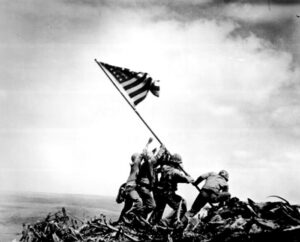
 interrogated, and afterward, they took their captors to their hideout. There, to their amazement, the Americans found a cave richly stocked with canned foods, flashlights, batteries, uniforms, boots, shoes, socks, and other goods that the pair had been pilfering over the years. I’m quite sure they recognized some of the items from the base. While the Japanese soldiers did no real harm, their self-imposed secret mission had come to an end.
interrogated, and afterward, they took their captors to their hideout. There, to their amazement, the Americans found a cave richly stocked with canned foods, flashlights, batteries, uniforms, boots, shoes, socks, and other goods that the pair had been pilfering over the years. I’m quite sure they recognized some of the items from the base. While the Japanese soldiers did no real harm, their self-imposed secret mission had come to an end.
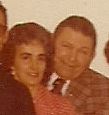
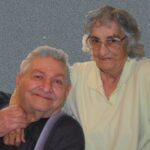 Bill Beadle became my uncle when he married my Aunt Virginia Byer. Uncle Bill was the youngest of eight children of William and Bertha (née Foster) Beadle. He was born in Worland, Wyoming, and most of his family lived there all their lives. When Uncle Bill passed away, on January 17, 2018, he was the last of the Beadle siblings. Growing up in the Worland area, which is pretty much rural Wyoming, Uncle Bill learned to love the outdoors. He loved hunting, fishing, and while hiking wasn’t as much “in style” as it is these days, I’m sure his brothers and sisters loved their outdoor adventures as much as any hiker these days.
Bill Beadle became my uncle when he married my Aunt Virginia Byer. Uncle Bill was the youngest of eight children of William and Bertha (née Foster) Beadle. He was born in Worland, Wyoming, and most of his family lived there all their lives. When Uncle Bill passed away, on January 17, 2018, he was the last of the Beadle siblings. Growing up in the Worland area, which is pretty much rural Wyoming, Uncle Bill learned to love the outdoors. He loved hunting, fishing, and while hiking wasn’t as much “in style” as it is these days, I’m sure his brothers and sisters loved their outdoor adventures as much as any hiker these days.
Another aspect of growing up in Worland, Wyoming is that most of the folks that lived there were, if not farmers and ranchers, then at the very least, cowboys. Uncle Bill was a cowboy all the way. He loved everything about the cowboy lifestyle, and especially the “Old West” which was his favorite era. I think that he could imagine himself living in that era all his life…especially in his childhood, but then, what little boy doesn’t want to be a cowboy. I know that all the little boys I know love cowboy boots, horses, and guns. It’s the simply the cowboy way of doing things, and he loved it.
Along with his cowboy values, came a desire to make sure that the nephews stayed on the right track, and if they had problems, or it looked like they were heading in the wrong direction, he would sit down with them and after talking to them a while, he could have them turned around and back in line. It was this aspect of Uncle Bill’s personality that endeared him to my cousin, Elmer. He was a successful businessman, and it was the same values that he taught the nephews that made him good at what he did. Uncle Bill spent much of his working life in the pipe yards. Then he decided to start his own rathole drilling business with his sons, Forrest and Steve by 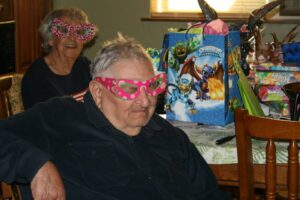 his side. While Uncle Bill was a great machinist and general all-around mechanic, his really felt alive when he was fishing and bird hunting in the Worland area with his son, Steve. I can imagine he and Steve spent a lot of time talking about their fishing trips and the times they had walked the fields hunting for Pheasant and Chukars. He loved those treks into the woods waiting for that unexpected bird to fly up out of nowhere. The hunter had just seconds to respond, and would be successful, only if he was a great hunter…and Uncle Bill was a great hunter. Today would have been Uncle Bill’s 95th birthday. I’m sure he’s out hunting (minus the gun) or riding a horse somewhere, having the time of his life. Happy birthday in Heaven, Uncle Bill. We love and miss you very much.
his side. While Uncle Bill was a great machinist and general all-around mechanic, his really felt alive when he was fishing and bird hunting in the Worland area with his son, Steve. I can imagine he and Steve spent a lot of time talking about their fishing trips and the times they had walked the fields hunting for Pheasant and Chukars. He loved those treks into the woods waiting for that unexpected bird to fly up out of nowhere. The hunter had just seconds to respond, and would be successful, only if he was a great hunter…and Uncle Bill was a great hunter. Today would have been Uncle Bill’s 95th birthday. I’m sure he’s out hunting (minus the gun) or riding a horse somewhere, having the time of his life. Happy birthday in Heaven, Uncle Bill. We love and miss you very much.
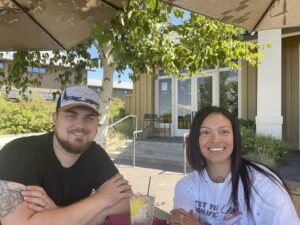
 My niece, Gaby Beach is a nurse at the Veteran’s Hospital in Eugene, Oregon. She loves her work. Being a veteran herself, Gaby has a heart for veterans. In her work, she deals various ailments, disabilities, and emotional needs the veterans. I’m sure that any nurse could go in and take care of the needs of the bodies of the veterans in Eugene, Oregon, or any veteran’s hospital, but it occurs to me that a nurse who is also a veteran, would have a unique connection to the needs of the men and women themselves…not just their bodies. I think that is where Gaby is maybe the best nurse they could have at that hospital.
My niece, Gaby Beach is a nurse at the Veteran’s Hospital in Eugene, Oregon. She loves her work. Being a veteran herself, Gaby has a heart for veterans. In her work, she deals various ailments, disabilities, and emotional needs the veterans. I’m sure that any nurse could go in and take care of the needs of the bodies of the veterans in Eugene, Oregon, or any veteran’s hospital, but it occurs to me that a nurse who is also a veteran, would have a unique connection to the needs of the men and women themselves…not just their bodies. I think that is where Gaby is maybe the best nurse they could have at that hospital.
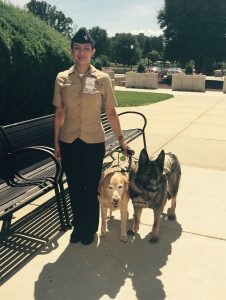
Gaby has a good heart. She loves dogs and has trained them to visit hospitals. The dogs help bring healing through those visits. It’s an emotional thing. Dogs have been known to lower blood pressure, reduce stress and anxiety, promote healing, provide comfort during tests and procedures, and provide companionship and comfort to patients and even to the staff. The thing is that these dogs must be trained to do their work. It isn’t something that comes totally naturally. Yes, the compassion is there, but the mannerisms aren’t. They must be taught how to treat a patient and how to behave in a hospital setting. That was where Gaby and others like her came in. I wonder if the Veteran’s Hospital in Eugene uses dogs as part of the therapy. If they do, it would be almost like coming full circle for Gaby. She loved those dogs. I could see it in her face when she told me about the kind of work she did with the dogs.
These days, Gaby and her husband, my nephew, Allen Beach have their own fur baby…in the form of a cute pup named Oly. Gaby and Allen love to hike and travel. They recently took a trip with Allen’s mom, Caryl Reed, and Stepdad, Mike Reed. They traveled along the Oregon coast, and really enjoyed getting to know the area they now call home. They moved to Oregon from Wyoming a little over a year ago, but when you live in a place, you don’t always do all of the touristy things. 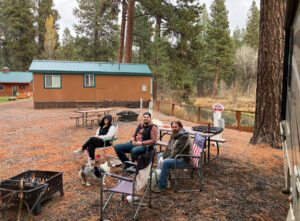
 They did some hiking in the area, but now, they are looking forward to taking more trips to the places they visited with Allen’s parents. They are settling in well to their new home, and they are very happy there, even if Allen says they lead boring lives. I guess everyone settles into a routine, and it could seem boring, but as long as they are happy, that is all that matters. Today is Gaby’s birthday. Happy birthday Gaby!! Have a great day!! We love you!!
They did some hiking in the area, but now, they are looking forward to taking more trips to the places they visited with Allen’s parents. They are settling in well to their new home, and they are very happy there, even if Allen says they lead boring lives. I guess everyone settles into a routine, and it could seem boring, but as long as they are happy, that is all that matters. Today is Gaby’s birthday. Happy birthday Gaby!! Have a great day!! We love you!!

 My niece, Toni Chase feels like this has been a rather uneventful year for her and her family. She and her husband, Dave Chase, but her sister, Chantel has a very different take on Toni and Dave have been up to this year. Chantel says, “Toni has begun a great renovation adventure. They have a regular contractor who has says he’s willing to train her on her days off. She has been learning, to texturize walls? and I believe she has already learned how frustrating and expensive renovation can be! Everyone already knows this stuff to some extent, but she has such a can do spirit that she just researches more and tries again! She’s always been a hard worker, so I know she’ll work hard until she gets it right!” The renovation Chantel is referring to is a rental house that Toni and Dave own, that will now be sold to her son, James and his wife, Manuela. The house was already very nice, but like all house built in the 1950s, and any year really, there are always repairs and other updates that needed to be done for the sale. These days, pretty much everyone likes the “open concept” style of home, and while I’m not sure I am totally onboard with that, I can see the value. Chantel is right about Toni’s “can-do” spirit. She looks at challenges as a new skill to be conquered and mastered. She takes the necessary steps to become an expert in the field, and boom…she has mastered it. Toni didn’t even consider the renovation as noteworthy, but she was very pleased that her big sister did.
My niece, Toni Chase feels like this has been a rather uneventful year for her and her family. She and her husband, Dave Chase, but her sister, Chantel has a very different take on Toni and Dave have been up to this year. Chantel says, “Toni has begun a great renovation adventure. They have a regular contractor who has says he’s willing to train her on her days off. She has been learning, to texturize walls? and I believe she has already learned how frustrating and expensive renovation can be! Everyone already knows this stuff to some extent, but she has such a can do spirit that she just researches more and tries again! She’s always been a hard worker, so I know she’ll work hard until she gets it right!” The renovation Chantel is referring to is a rental house that Toni and Dave own, that will now be sold to her son, James and his wife, Manuela. The house was already very nice, but like all house built in the 1950s, and any year really, there are always repairs and other updates that needed to be done for the sale. These days, pretty much everyone likes the “open concept” style of home, and while I’m not sure I am totally onboard with that, I can see the value. Chantel is right about Toni’s “can-do” spirit. She looks at challenges as a new skill to be conquered and mastered. She takes the necessary steps to become an expert in the field, and boom…she has mastered it. Toni didn’t even consider the renovation as noteworthy, but she was very pleased that her big sister did.
Toni’s husband, Dave has a laid-back attitude that Chantel says, “is perfect for Toni.” My sister, Cheryl, Toni’s 
 mom, says “Dave is perfect for Toni, but I think practical, sensible, funny and tolerant describes him way better! He’s a busy man, and I’m not sure “laid back” fits him!” Of course, the opinion on what is “laid-back” could be different. Dave is motivated and hardworking, but he is also easy to get along with and accepting of others, and I think maybe that is what Chantel meant. In a marriage, the two partners have to be accepting of the quirks of their partner, or they will always be a little bit at odds with one another. Toni is a sweet girl, and she has her own style and ideas. Dave wouldn’t want it any other way. Dave and Toni like to let each be their own person, and it works out quite well for them. They love each other for keeps, and that’s why they make a beautiful couple.
mom, says “Dave is perfect for Toni, but I think practical, sensible, funny and tolerant describes him way better! He’s a busy man, and I’m not sure “laid back” fits him!” Of course, the opinion on what is “laid-back” could be different. Dave is motivated and hardworking, but he is also easy to get along with and accepting of others, and I think maybe that is what Chantel meant. In a marriage, the two partners have to be accepting of the quirks of their partner, or they will always be a little bit at odds with one another. Toni is a sweet girl, and she has her own style and ideas. Dave wouldn’t want it any other way. Dave and Toni like to let each be their own person, and it works out quite well for them. They love each other for keeps, and that’s why they make a beautiful couple.
Toni and Dave often take trips to Centennial, Wyoming, where they get together with Dave’s mom, brother, and sister. They took a couple of trips there this year. Centennial is a beautiful area, and they love each visit with family. Toni and Dave really love to travel, and they take several trips each year. In May, they took a trip to Marco Island in Florida. They plan was just to relax by the seashore and see some of the sites down there. Toni says that their lives are “happy, but boring.” I always find that amazing, because what people think is boring 
 and everyday stuff, often appeals to other people. If you consider the “Little House on the Prairie” books or “Anne of Green Gables” you would find that these were simply books about life, and as my Aunt Bertha Hallgren quoted in her writings, “I love losing myself in other men’s minds.”. Sometimes, the most interesting things happen in the seemingly “mundane” lives of other people. Today is Toni’s birthday. Happy birthday Toni!! Have a great day!! We love you!!
and everyday stuff, often appeals to other people. If you consider the “Little House on the Prairie” books or “Anne of Green Gables” you would find that these were simply books about life, and as my Aunt Bertha Hallgren quoted in her writings, “I love losing myself in other men’s minds.”. Sometimes, the most interesting things happen in the seemingly “mundane” lives of other people. Today is Toni’s birthday. Happy birthday Toni!! Have a great day!! We love you!!

